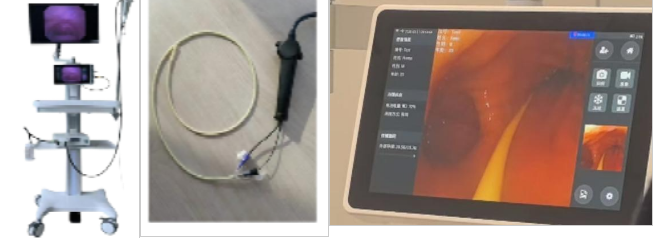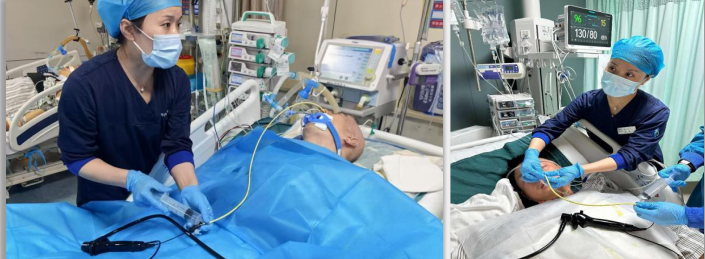The visualized nasoenteric tube placement technology, centered on endoscopic imaging, replaces traditional steel guidewires with a visualized tube core, transmitting real-time images from the intestinal tract to a display screen. Operators can directly observe the tube's path, precisely adjust its direction, and achieve accurate positioning of the nasoenteric tube tip within the intestine. Compared to the traditional blind insertion method, this technology significantly reduces placement time, improves operational efficiency, minimizes complications caused by repeated insertions, and alleviates patient discomfort and financial burden.
On March 11, 2025, the First Affiliated Hospital (FAH) of Xi'an Jiaotong University became the first in Northwest China to implement this technology. Led by the Nursing Department and advanced by the Enteral Nutrition Team, the project was overseen by Mu Chunying, Head Nurse of the Land Port Division Comprehensive District, and initially applied in the Neurology ICU. National ICU Specialist Nurse Zheng Li from the Department of Neurology and National Nutrition Specialist Nurse Liu Ru from the Central ICU successfully performed the procedure in the main hospital's Neurology ICU for patients with status epilepticus and mechanical ventilation, completing the placement in just 20 minutes with clear visualization of intestinal villi under the endoscope.
 Under the promotion of the Enteral Nutrition Team, a nursing consultation for difficult nasogastric tube insertions and special cases was completed within one week, involving multiple department ICUs. Successful tube placements were performed in 20 special patients, including those with tracheoesophageal fistula and gastrointestinal paralysis, across the main hospital, Land Port Division, and South Division, securing valuable recovery time for critically ill patients.
Under the promotion of the Enteral Nutrition Team, a nursing consultation for difficult nasogastric tube insertions and special cases was completed within one week, involving multiple department ICUs. Successful tube placements were performed in 20 special patients, including those with tracheoesophageal fistula and gastrointestinal paralysis, across the main hospital, Land Port Division, and South Division, securing valuable recovery time for critically ill patients.

Nasoenteric tubes are a primary route for enteral nutrition, offering good tolerance and low risk of reflux and aspiration. However, post-pyloric placement has long been a challenge in the emergency and critical care fields. The traditional blind insertion method demands high operator skill, often takes a long time to pass the pylorus, and is prone to misplacement, requiring X-ray localization, which carries risks of radiation and positioning errors. In contrast, the visualized nasoenteric tube placement technology avoids misplacement, reduces time and complications, decreases reliance on X-rays, ensures patient safety, and enhances nutritional support, marking a significant advancement.